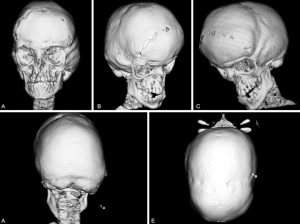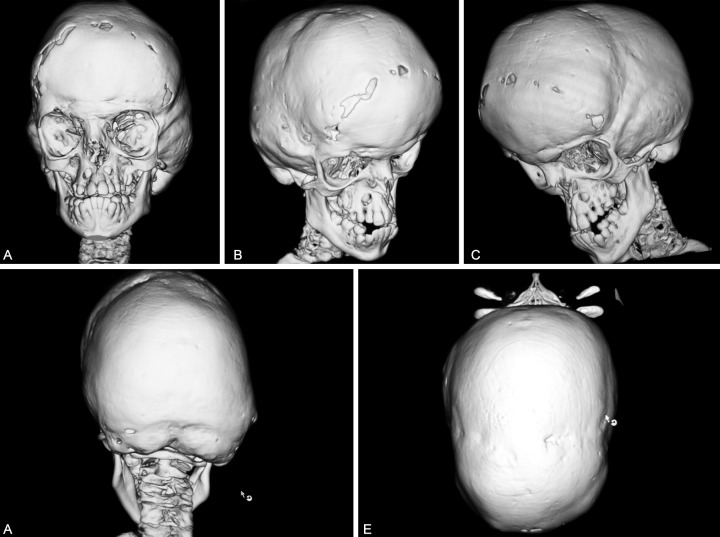What You Need To Know About Crouzon Syndrome
Crouzon syndrome is classified as one of the rare inherited disorders whereby a variety of the sutures (flexible seams) in the skull of a baby fuses or turn into bone too early. This early fusion is a hallmark for a variety of conditions named craniosynostoses.
In a normal baby, the flexible seams (sutures) in the infant’s skull will remain open in order to allow the normal growth of the brain. When the sutures close up too early, the face and the skull can or will become misshapen due to the growing brain. The signs associated with Crouzon syndrome usually begin within the first months of the baby’s life. This continues and progresses until the child’s 2nd or 3rd birthday.
This syndrome affects around 5% of all the babies that have craniosynostosis. Louis E. O. Crouzon a French neurologist first described the condition in an earlier part of the 20th century.

Symptoms
The babies that have Crouzon syndrome can present the following symptoms:
• Bulging eyeballs
• Enlarged forehead
• Eyes that will point in 2 different directions
• A narrow and long head or a wide and short head
• Eyes that are spaced widely apart
• Strabismus, which means crossed eyes
• Eyelids which slant downwards
• Vision loss
• Beak-like and curved nose
• Flattened cheeks
• A lower jaw that protrudes
• Short upper lips
• Poorly developed and small upper jaw
• Crowded teeth
• Hearing loss
• Cleft lip (opening in the lip), or cleft palate (opening in the roof of the mouth)
• Mismatched bite
The above mentioned symptoms can be more drastic in certain babies when compared to others. A very small percentage of Crouzon syndrome children will also present a skin condition known as acanthosis nigricans. The condition results in thick, rough and dark patches on the skin. They develop in the folds such as the groin, neck, armpits and behind the child’s knees.
Life Expectancy
People who have Crouzon syndrome usually live a normal life-expectancy and the majority of the children diagnosed with the condition will be unaffected intellectually. However, the condition can result in altering the face shape which can result in hearing and vision issues.
Causes
Crouzon Syndrome occurs due to changes that are known as mutations in 1 out of the 4 FGFR genes. In most cases it will affect the FGFR2 gene and in rare cases it will affect the FGFR3 gene.
The genes perform the role of carrying out instructions in regards to making proteins which direct the functions of the body. A mutation is able to affect the functions that the specific type of protein has.
The FGFR2 codes for the protein known as “fibroblast growth factor receptor 2.” As the fetus is developing inside the womb, this is the protein which signal the bone cells to develop. The mutations of this specific gene increase these signals, which is what increases the bone development which is what results in the skull fusing way too early.
The baby that inherits this syndrome only needs to take on one copy of this gene mutation derived from either parent in order to contract Crouzon syndrome. If you happened to have the condition, each child that you have will have a 50% chance in regards to inheriting it. This type of inheritance-pattern is known as “autosomal dominant.”
In around 25 to 50% of the individuals with Crouzon syndrome, gene mutation occurs spontaneously. When this occurs, the baby did not need a parent who has the syndrome in order to contract this disorder.
Complications Associated With Crouzon Syndrome
The typical complications that have been reported with Crouzon syndrome include:
• Vision loss
• Hearing loss
• Hydrocephalus (fluid build-up inside the brain)
• Breathing problems or sleep apnea
• Exposure keratitis (inflammation in the front of the eyes), or exposure conjunctivitis (inflammation in the membrane lining the whites of the eyes).
Treatment
Children that have been diagnosed with a mild form of Crouzon syndrome might not require treatment. The children who have been diagnosed with severe Crouzon syndrome should be seeing a craniofacial specialist who is doctors that are experienced and treat the disorders associated with the face and the skull.
In the cases that are more severe specialized doctors are able to conduct careful surgery that opens up sutures, which allows the brain the space to grow normally. After such a surgery the child will be required to wear a specialized helmet. This helmet assists in reshaping the skull.
Surgery is usually required for the following reasons:
• To straighten or correct crooked teeth
• Relieve the pressure that is building up in the skull
• Correction of eye issues
• Corrections for malformed jaws
• To correct cleft palates or cleft lips
Children that have hearing issues caused by Crouzon syndrome are able to use hearing aids in order to amplify sounds. Children diagnosed with the condition can also require language or speech therapy or both.
Here’s an encouraging story. A little change can go a long way …
Say hello to Charlie
What Is Involved In The Diagnosis Of Crouzon Syndrome
The diagnosis of Crouzon syndrome usually begins with a doctor examining the face and the skull shape. Doctors also make use of imaging tests that include MRI scans (magnetic resonance imaging), CT (computed tomography) and X-rays to locate an increase in pressure inside the skull or fused sutures. Tests to locate a mutation of the FGFR2 gene are also used.






